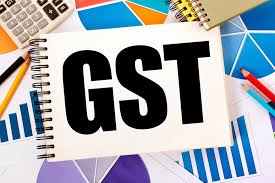GST return filers doubled as compliance was simplified: Vivek Johri
Steps taken by the Goods and Services Tax (GST) Council and by tax authorities at the central and state levels have doubled the number of taxpayers filing regular monthly GST returns, said Central Board of Indirect Taxes and Customs (CBIC) chairman Vivek Johri. In a post-budget interaction with Mint, Johri explained the tax goals set out in the budget for FY23 and said the Centre would move the GST Council to bring more clarity on applicability of GST on cryptocurrency transactions. Edited excerpts:
We are examining it. There is a process that we go through. We examine it internally. Then we take it to the law committee (of the GST Council). Then it goes to the council. It may take two to three months.
One of the overarching themes in budget for FY23 is simplification of the tariff structure in customs. The second is supporting Atmanirbhar (self-reliant) Bharat, supporting exports and supporting micro, small, and medium enterprises through some rejigging of customs duty. On GST, we have tried to align the law with the new tax return filing architecture. The law was framed with a different return system in mind. The GST Council has decided to adopt the new return architecture and the law has to be aligned to it. That is the main import of changes on the GST front. Other than that, there are some trade facilitation measures and one or two enforcement measures dealing with bogus tax credits and fake invoices.
We have tried to achieve better balance between taxpayer facilitation and enforcement because we have found based on our experience in 2020 that there were a large number of cases and dealers who were trying to misuse the input tax credit scheme through bogus invoices. So we had to recraft our strategy to deal with that. However, that is not the only way in which we have dealt with it. We have also tried to simplify the return filing process. We tried to rationalize the late payment fee so that the charges for filing late returns are not onerous, particularly for small taxpayers. Besides the administrative measures we have taken for better compliance such as persuading non-filers and those who have stopped filing, we have also done outreach programmes. All these have helped improve compliance and that is part of the reason one sees such a huge improvement in GST collections.
The percentage and number of return filers have gone up substantially. These have almost doubled. Return filing was hovering at 45-50% just a year and a half ago. Now it has gone up to 90%.
You have about 12.8 million taxpayers. That is the total tax base for GST and roughly about 2 million leave the system and another 2 million join every year. That is broadly the number game. Out of this, about 4.8 million taxpayers have opted for the quarterly return filing and monthly tax payment scheme. If you take away 4.8 million and some more for the composition dealers (quarterly return filers under another scheme), you will be left with about 7 million taxpayers for monthly return filing. About 90% of them file on a monthly basis. I am talking about 90% of the eligible taxpayers filing returns on a regular, monthly basis. (Earlier it was 45-50%.)
With the changes in the architecture of return filing, we have not only simplified the process, we have made everything more transparent and visible. There is self-induced discipline because of which we have been able to reduce the extra margin we were giving in claiming tax credits.
We have made return filing sequential now. We have said that you cannot file GSTR 3B (return showing monthly summary of transactions) if you have not filed GSTR1 (return showing sales). All these changes in law you may call tightening, but they are actually rationalization measures. They are meant to protect the user of input tax credit from being exposed to the situation where the supplier (seller of goods or service) has not uploaded certain invoices or has uploaded invoices but has not paid the tax. There is better payment and filing discipline after we have made these changes. That is reflecting in the GST collection numbers.
The message is about the kind of system we are trying to put in place. We do not want a system where there is too much discretion at the hands of individual officers in an uninformed way. We want to assist them through data analytics so that any choice of picking up a taxpayer for examination is subject to rigorous checks whether it is on the customs side or on the GST side. It is to be based on scientific methodology.
Source:https://www.livemint.com/news/india/gst-return-filers-doubled-as-compliance-was-simplified-vivek-johri-11644345023868.html
Download our App to get knowledge updates: https://play.google.com/store/apps/details?id=com.app.gstmitra
=
Join Our Telegram Channel for more updates:https://t.me/praveengst




Comments
Post a Comment